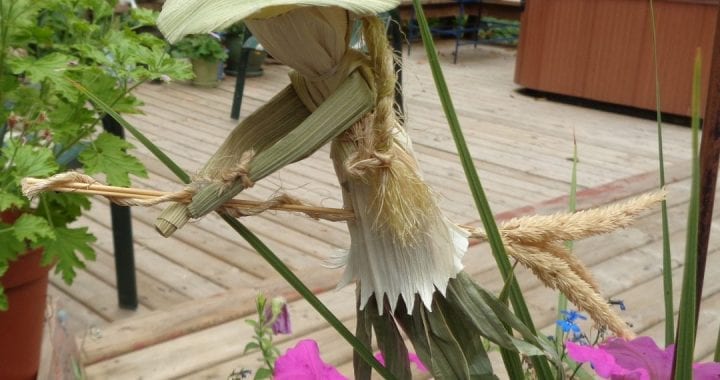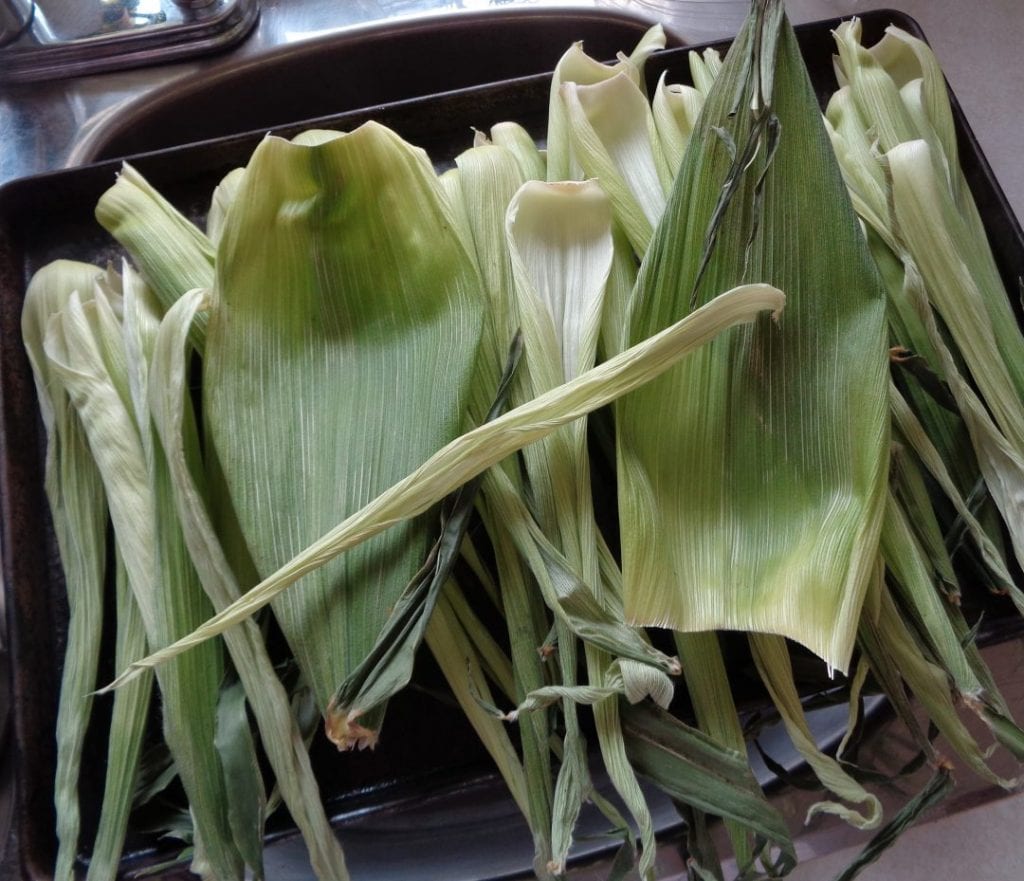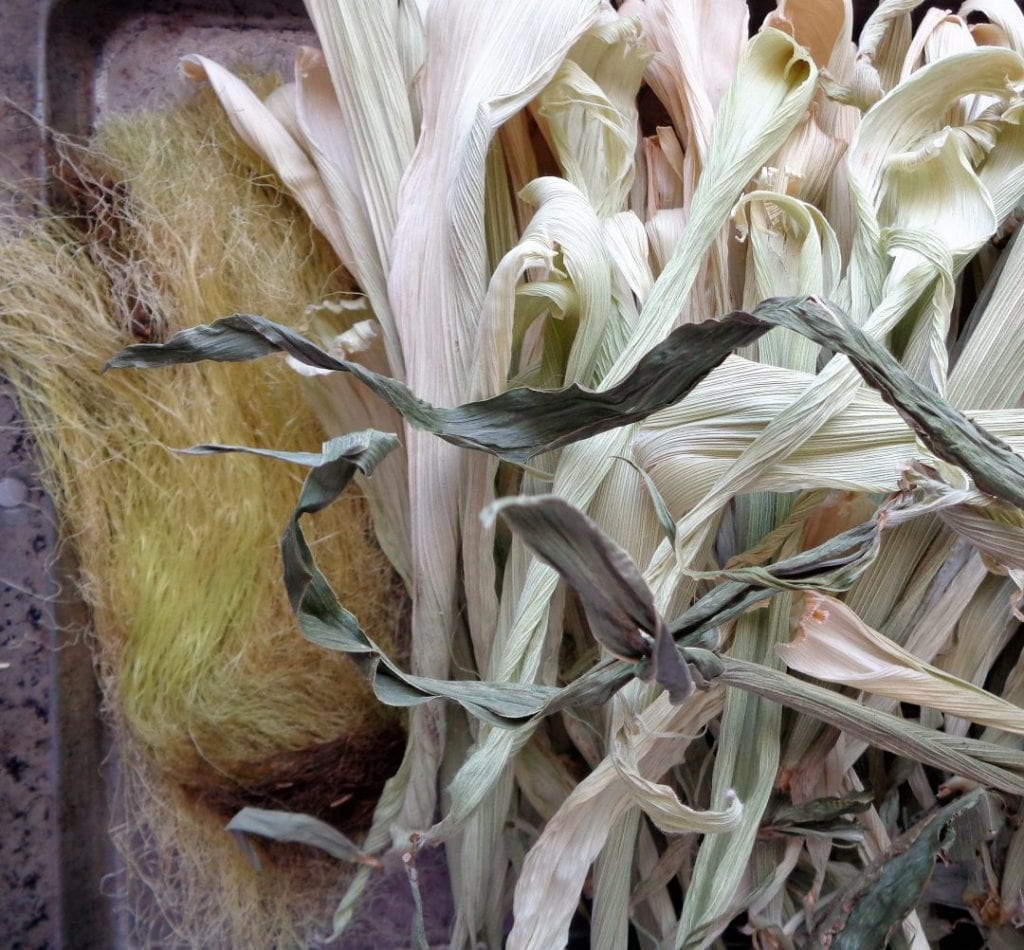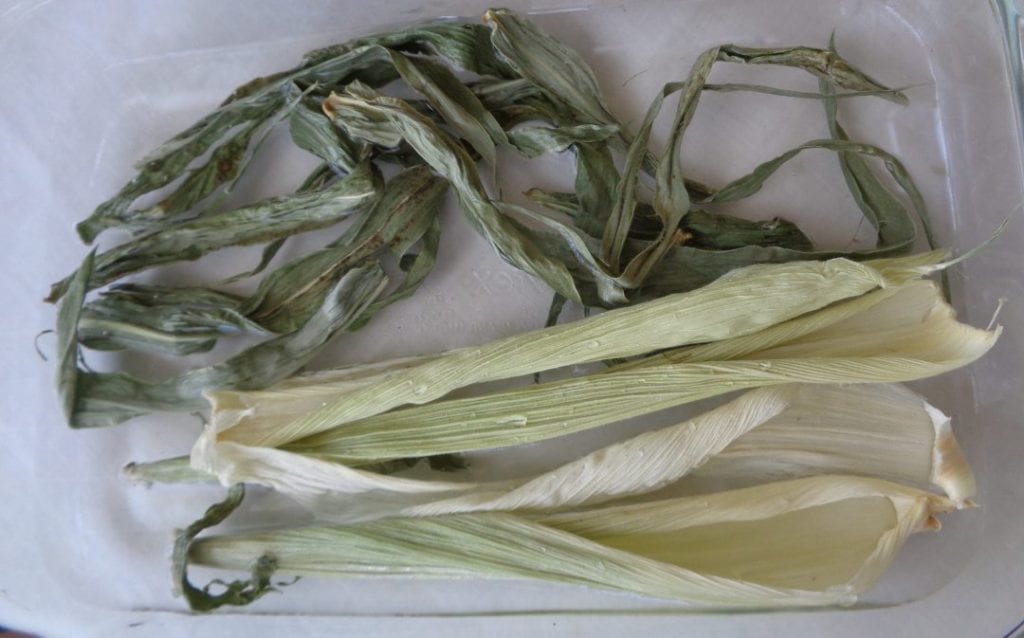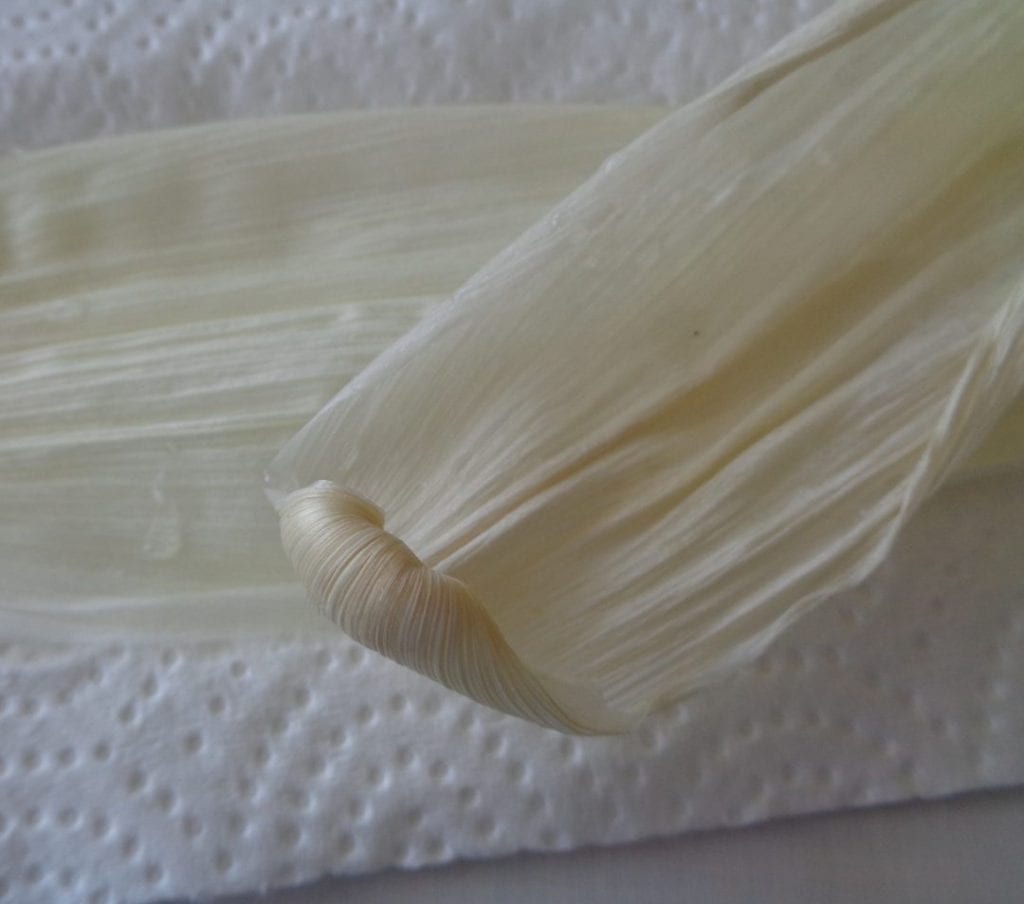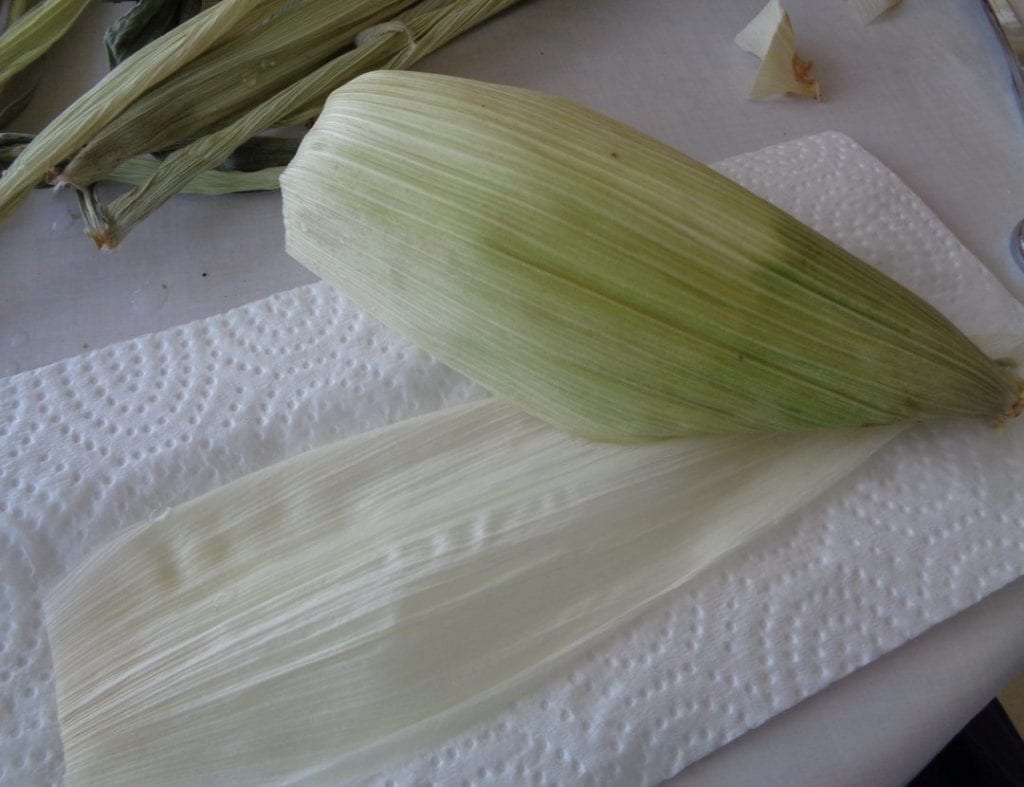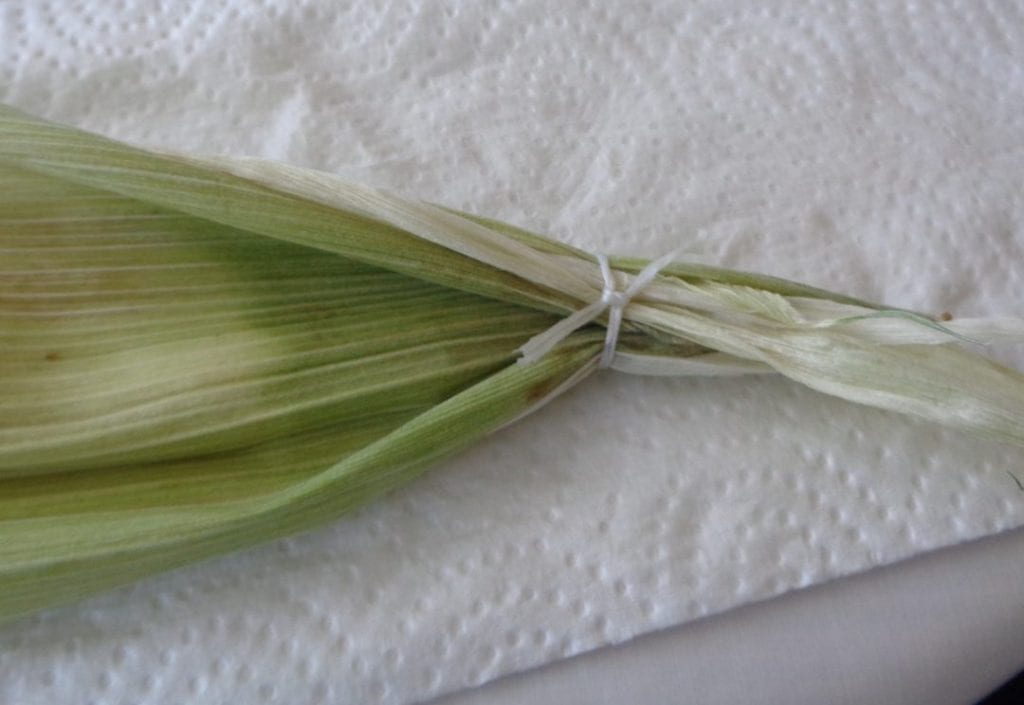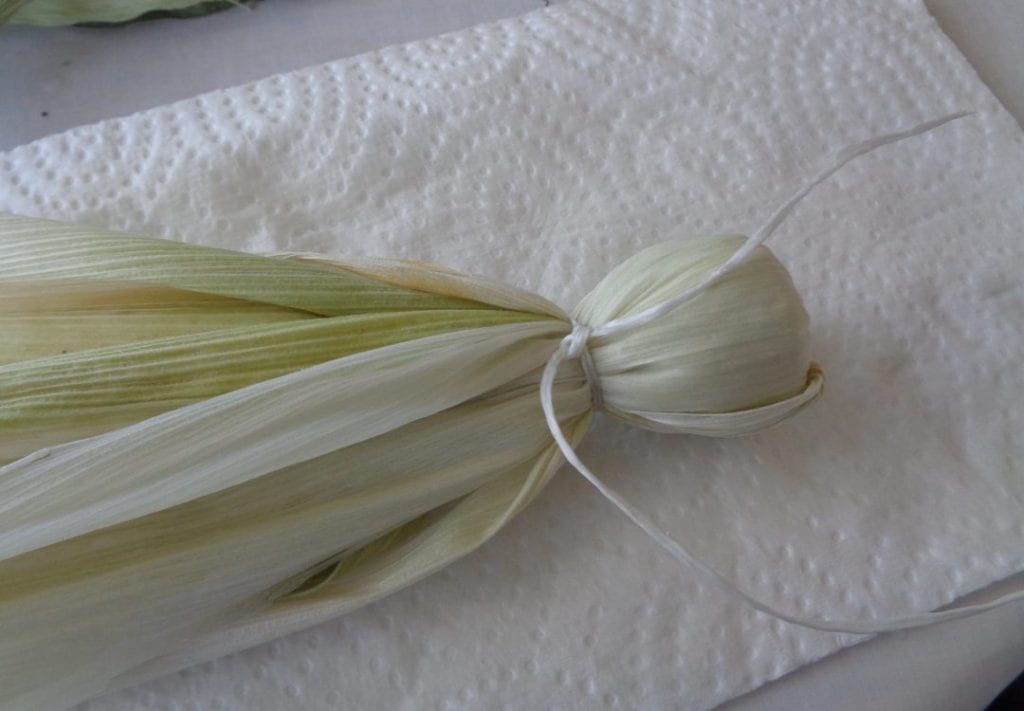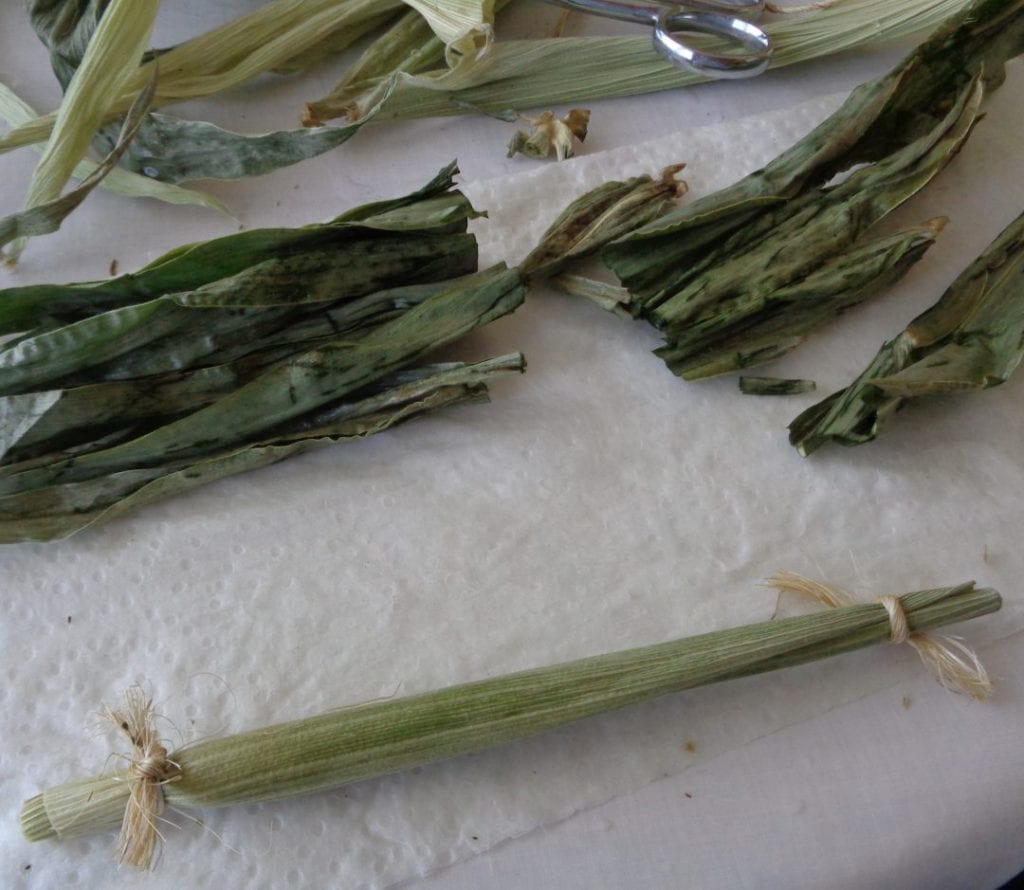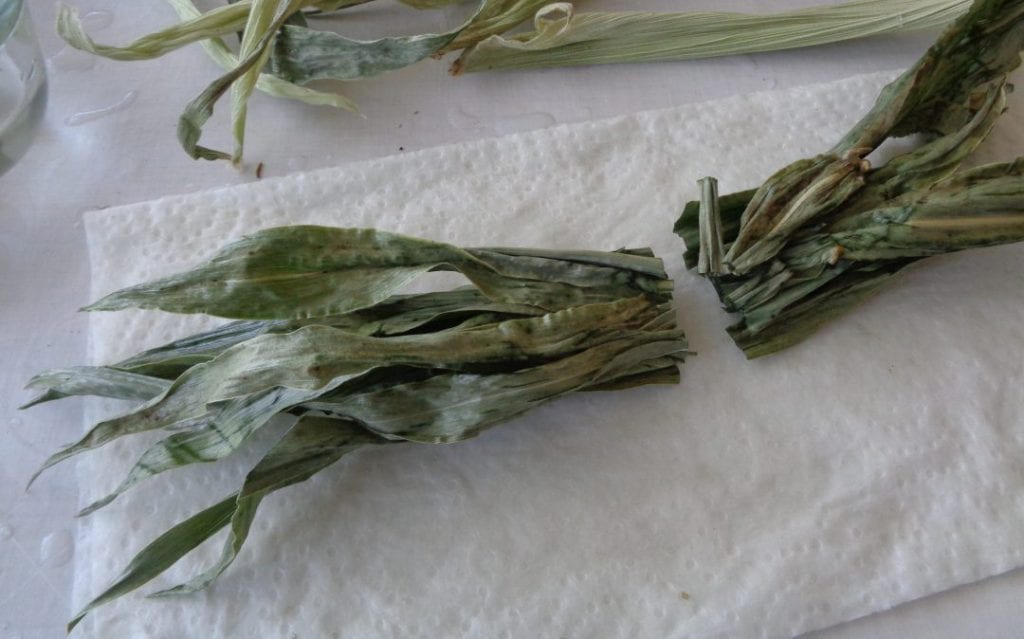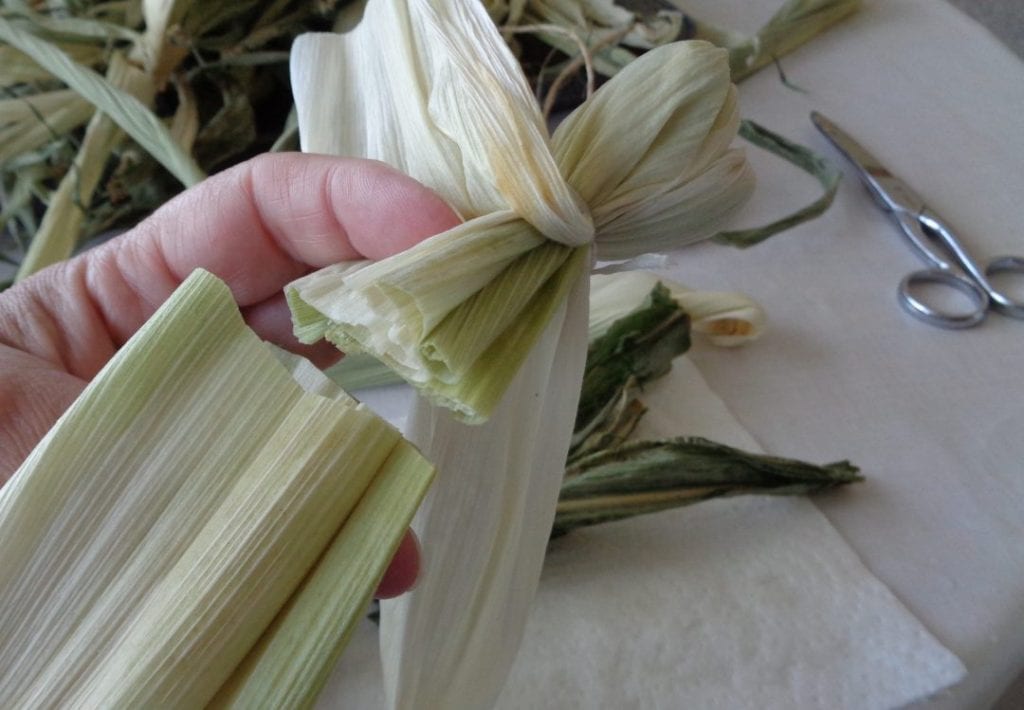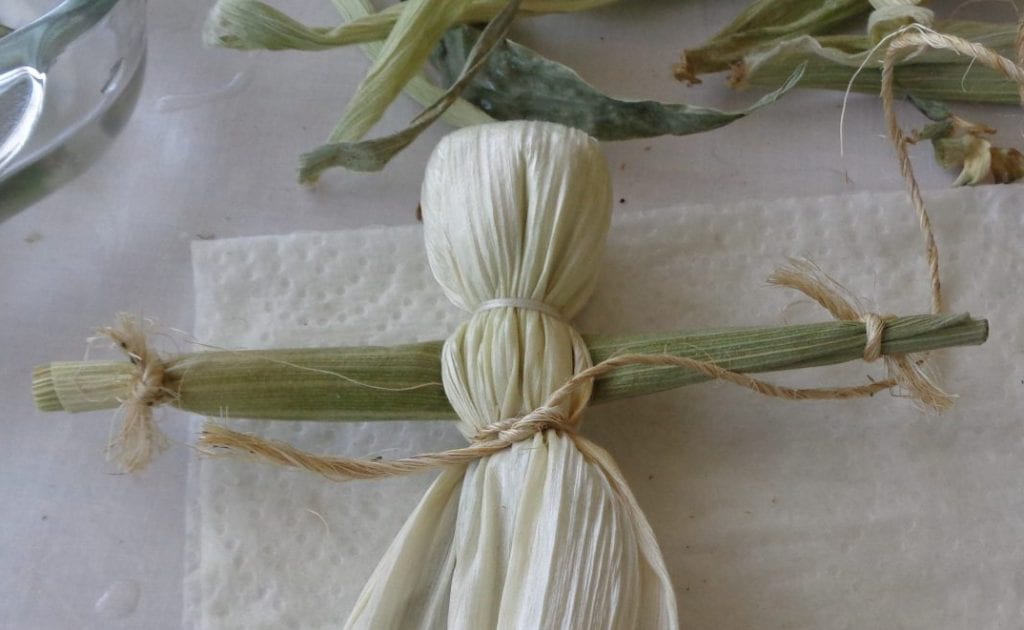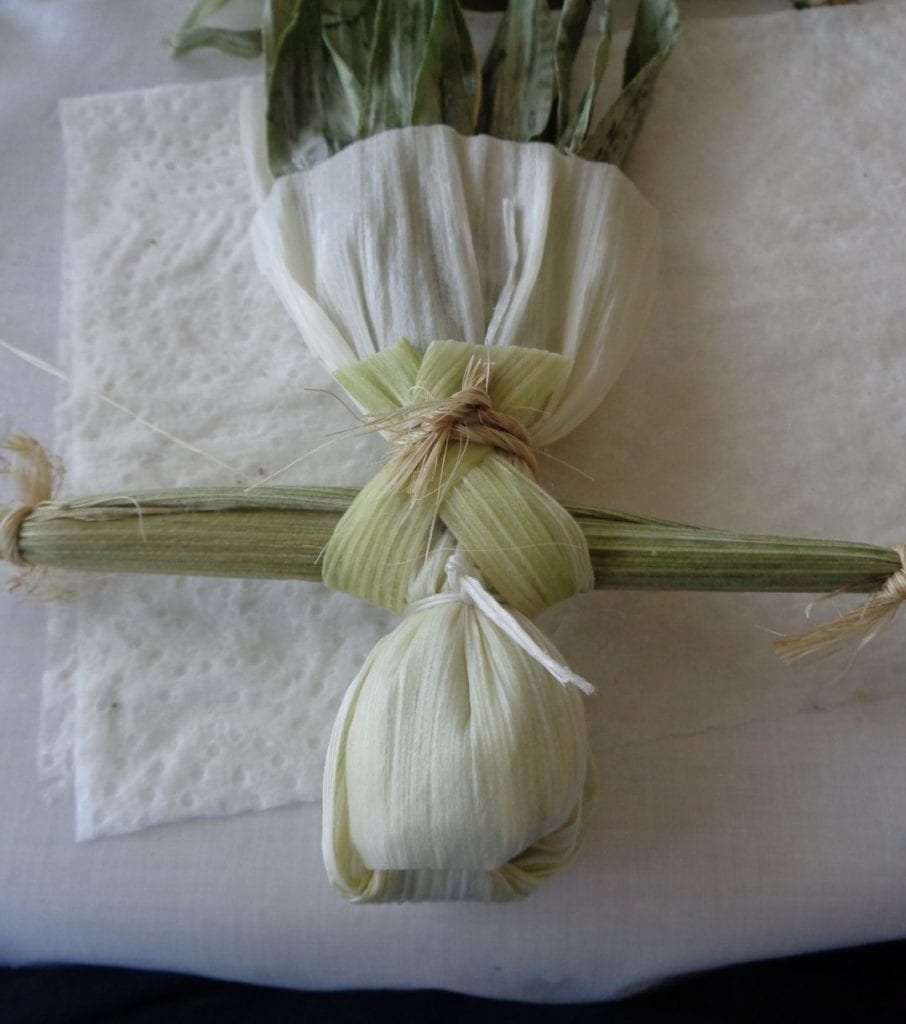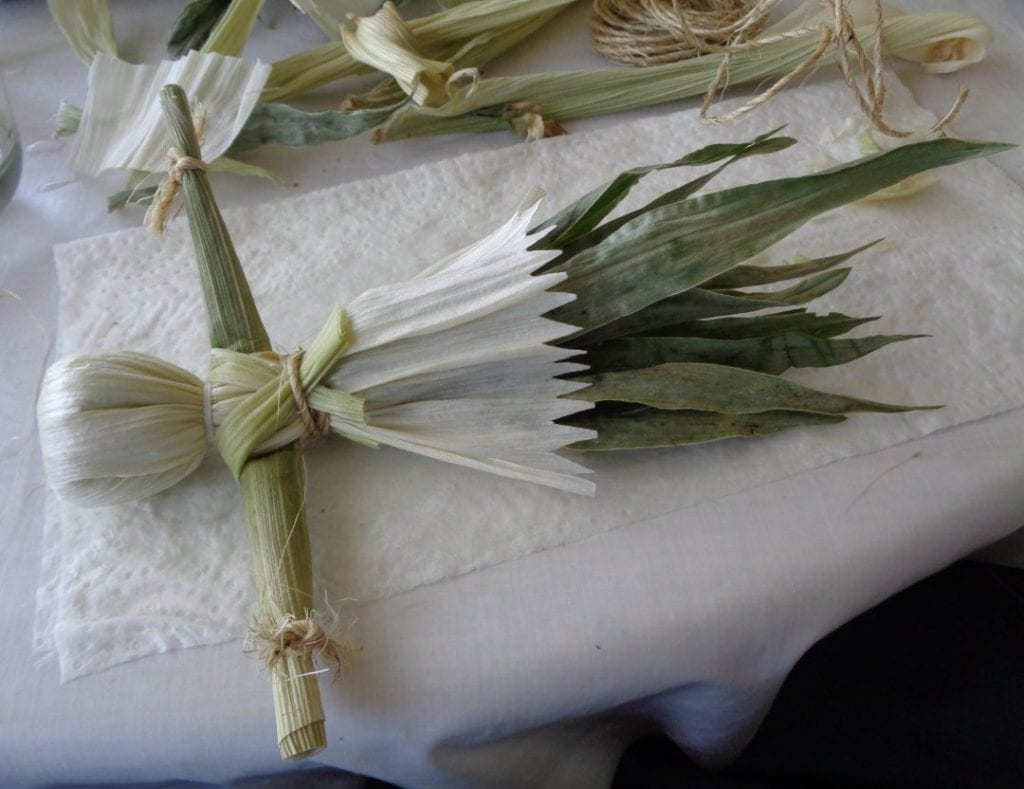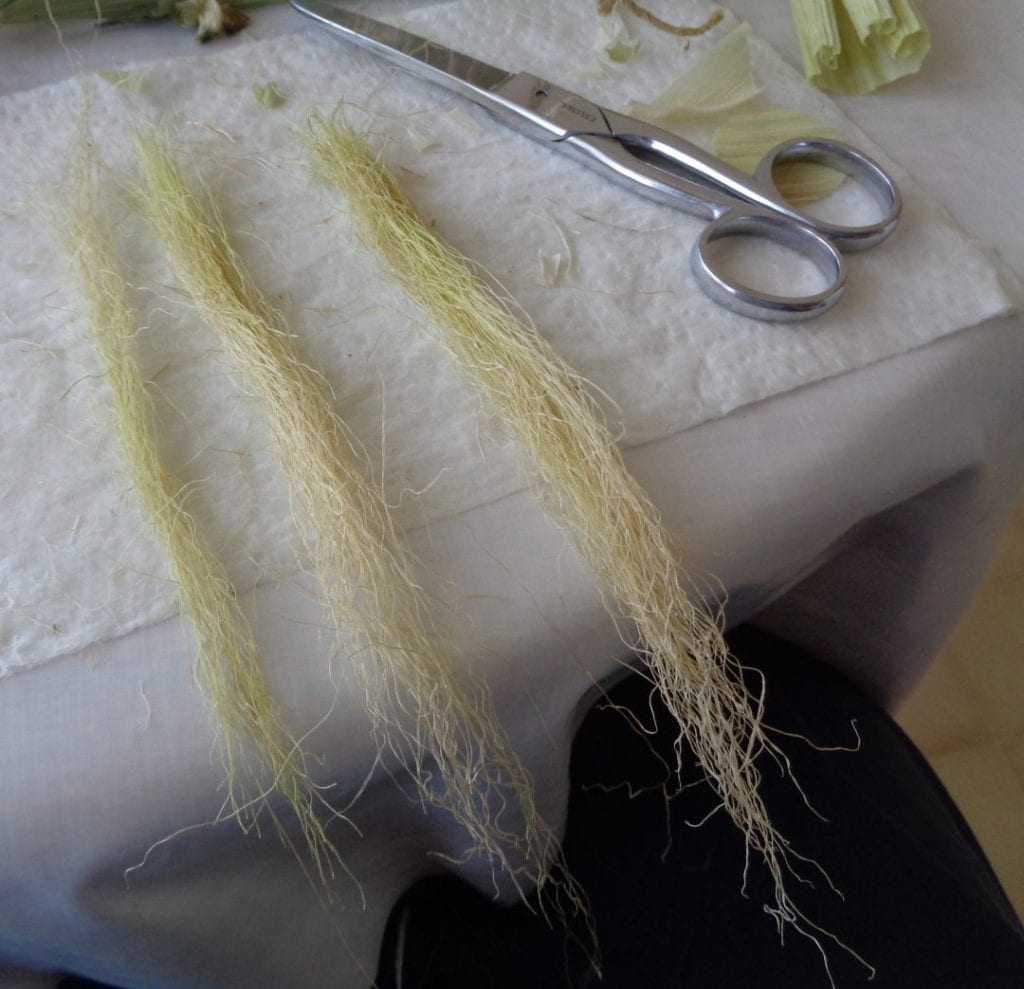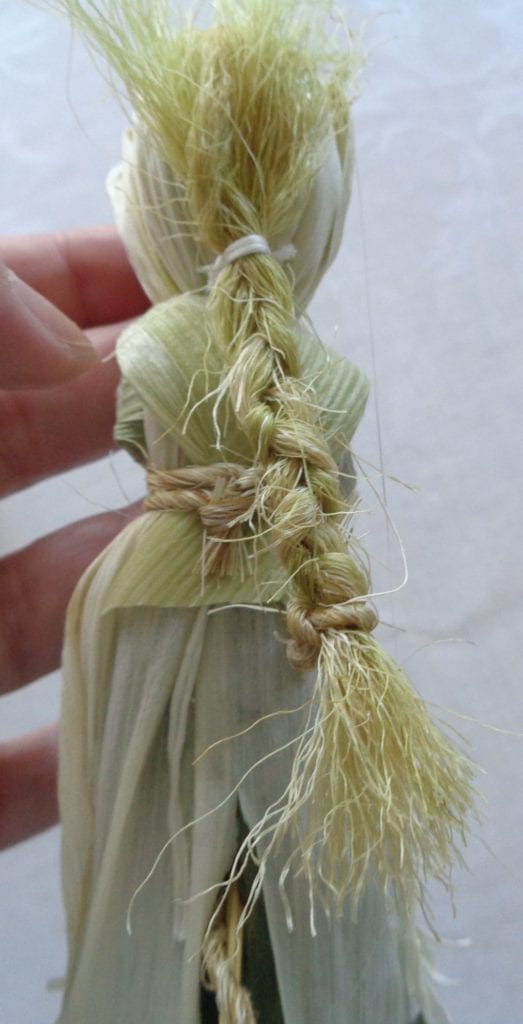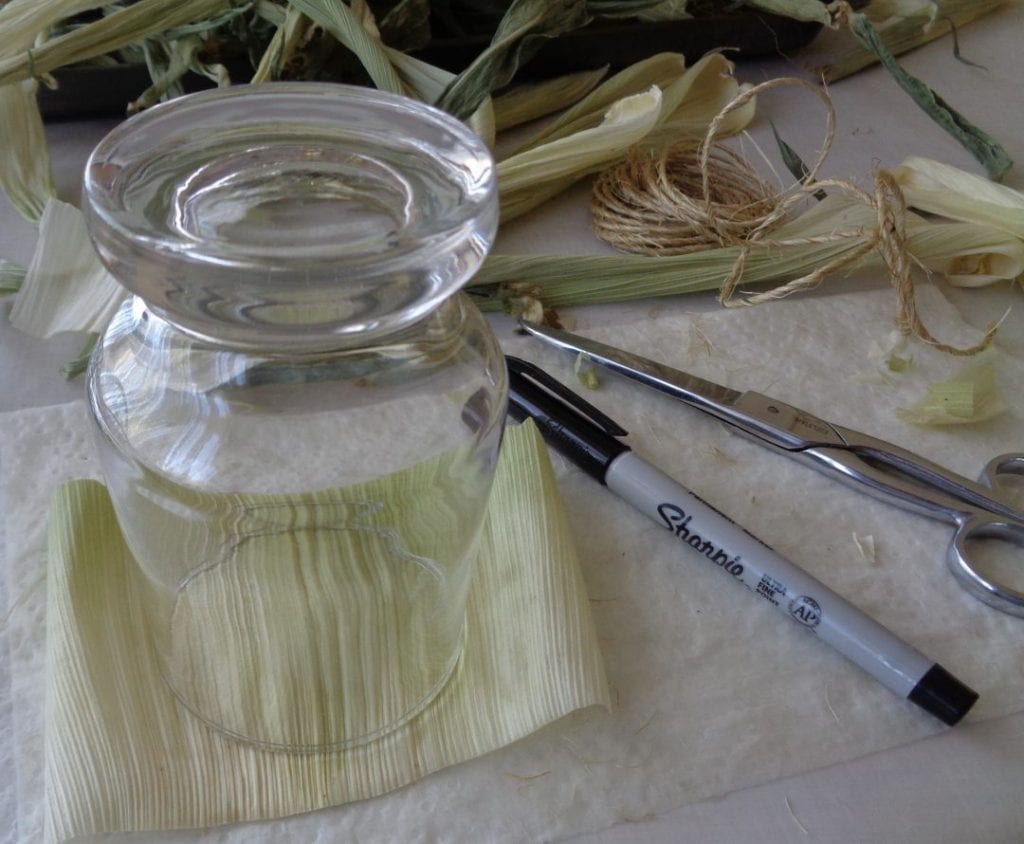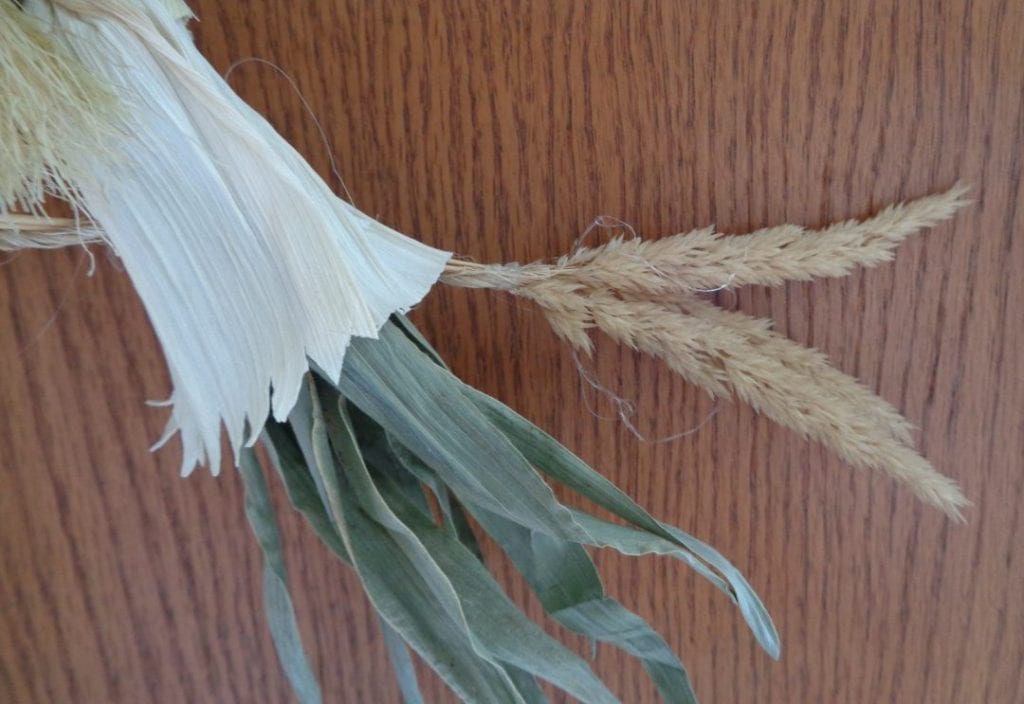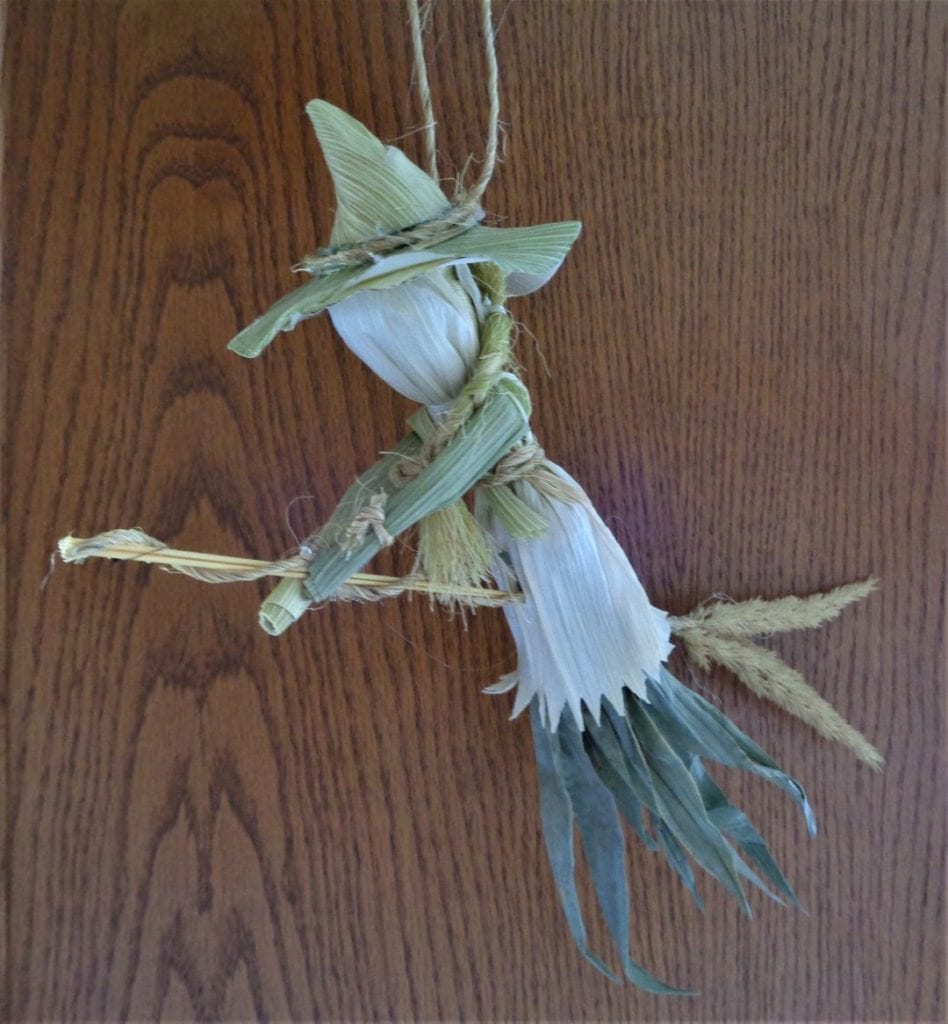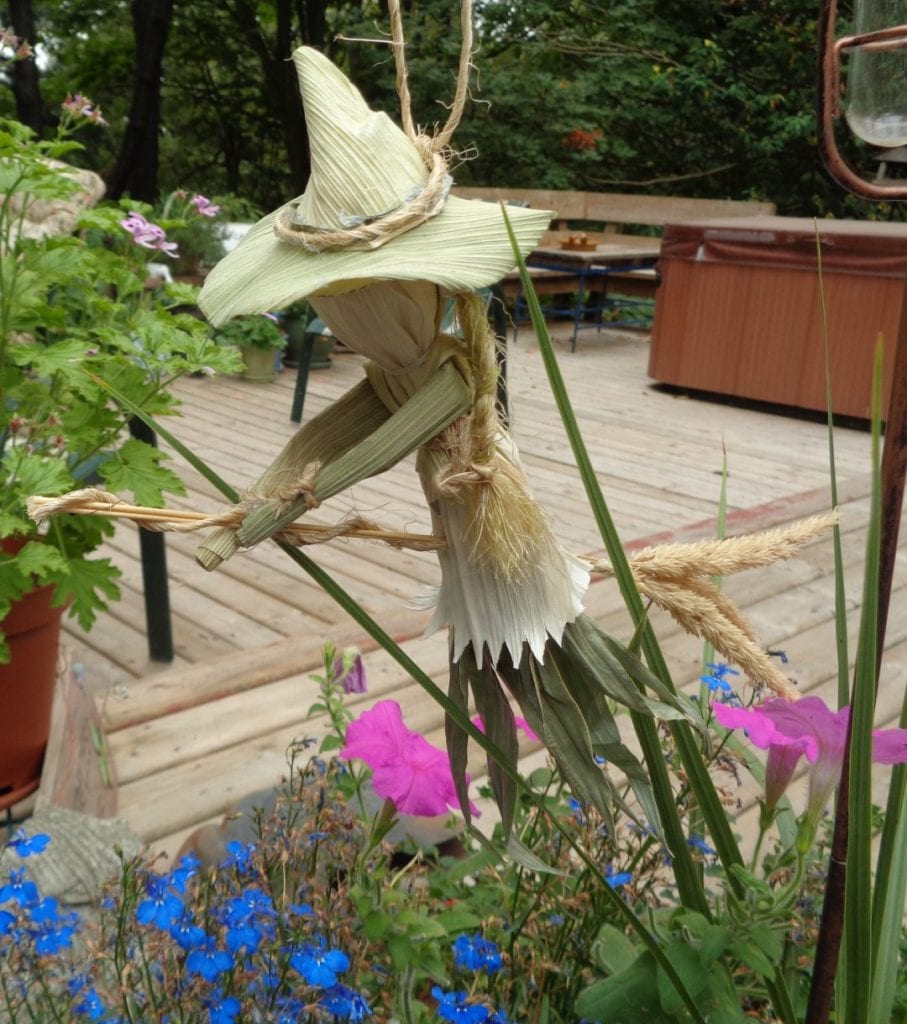A kitchen witch is a poppet, traditional to northern European countries, usually made from left over bits of material, in the form of a hag riding her broomstick. They hung in kitchen windows and were said to bring blessings and good food.
Corn dollys or corn mothers are a form of straw work with a long history in Europe. They contained the last of the wheat harvest and were held inside, in a place of honour, until the following year where along with ritual blessings, they were returned to the earth with a wish for continued bounty.
Corn husk dolls are a North American tradition of creating dolls for play in first nations cultures and the technique is also used to fashion Thanksgiving tables decoration in today’s homes as in the States, the simple dolls can look like pilgrims.
This project brings all three traditions together in a kitchen witch made from corn husks with the option of a wheat broom for returning to the earth next spring.
The husks came from sweet corn and were individually cut from the stocks, so they could be as long as possible.
You will need a maximum of ten husks and tips per dolly but I wanted a selection of colours and sections to choose from so all the husks from several summer time dinners were dried.
Let the husks sit in a warm dry place as they dry out. I used the garage and added fresh husks as we enjoyed more corn, occasionally turning them around. In total the husks and silk sat for about two weeks before they were used.
It is possible in some locations to purchase dried husks at a craft store. They are generally all one light colour and can be dyed if you are feeling so inclined.
To use the husks they need to be returned to water and softened, making the pieces pliable for doll and dolly making or weaving. Generally 10 minutes is enough to start and the husks can be returned to the water is needed. Place a plate or bowl on top to keep the husks in the water if needed.
The bottoms of the husks, where they would have been attached to the stock, will need cutting off to allow the individual husks to widen properly and lie flat. Cut just high enough to remove the curl.
Used here are corn husks from sweet corn. Silage/cow/filed/dent corn cobs, I have been told, can have longer husks and for other projects that would be a better choice, if you can find it.
Take the pieces you need out of the water and place on something absorbant to take the majority of the moisture.
You will need an even number of pieces to start the body of the kitchen witch, either four, six or eight corn husks. I used six.
The greener husks are thicker and stronger while the whiter ones, found nearer to the corn, receive no sunlight, are thinner and more flexible. Place at least two white husks in the middle of the pile of husks as they will be the ones visible for the face of the kitchen witch and will create the contrast between the dress/apron and the trailing pieces below.
Of course if you would like to make Elphaba, who eventually becomes the Wicked Witch of the West, then placing two green husks in the middle of the pile will give her her green face.
Tie the pile of husks together about 1 1/2 inched down from the tips. I used a double knot of some thin white string but if you want to be fully natural twine will do the job as well. An extra thick cotton thread would work as well. I found this easier to get started and switched to twine a little later in the process.
Once tied, find the middle and open the husks out, half to each side. Fold back, over the knot to form the head. I chopped up the curly pieces that had been cut off the bottom of the corn husks and added them inside for a little extra bulk. Optional but I found it helpful.
Tie another knot to create the neck. Again I used a material that would not stand out as much as the twine would but it is simply a matter of choice.
The green thicker husks are now inside and the whiter ones are vivible on the outisde.
Choosing a middle coloured green, roll up a husk and tie it at each end. This will become the arms of your corn husk dolly and will fit just below the neck.
Measure the proper length by slipping the arms into the middle of the dolly under the neck and cutting anything off that seems too long for the body size. I switched to twine at this point.
It is possible to ruffle the ends by making many small cuts between the twine and the end of the rolled husk.
Make the skirt by using the the dark tips of the husks that have been soaking. These are the thinner tips that are at the top of all the outside husks. You will need about 8. A few extra tip one way or the other is also fine.
Determine the length of the wispy skirt you would like to have and place the tips together cutting off the extra. Ensure that they are long enough so that when the waist is tied, the cut ends can be included in the bundle of husks that will form the waist.
Separate the husks that would normally form the body of a doll and cut out the husks in the middle section, leaving the outside light husks which will become the dress/apron. Leave enough of the husk that they will bring bulk to the waist section and then disappear below that point.
Place the arms underneath the neck and the darker green tips below the arms (think empire waistline), under the lighter outside husk that remains and infront of and behind the stub left over from the cutting off of the inside husks. Form the waist and secure the arms by tightly tying a knot to hold all the pieces together.
Make sure the twine has several inches additional length at each end to tie two or three time around the waist again as the “shawl” is added in the next steps.
As all the husks are moist and malleable, feel free to gently push or pull as needed to form the shapes you are looking for.
Trim the shirt/apron to the desired length and cut decoratively as desired. Try using a hole punch if you have one handy or a small pair of scissors. This is the part where you can be as simple or a fancy as you would like.
Using another piece of husk, cut it lengthwise and then again in half widthwise. Roll each section and place over the shoulders of the kitchen witch, crossing front and back. This will create the impression of a shawl. Secure by wrapping the twine around and tying at the back of the doll. Double knotting if needed. Trim the ends of the husk sectionsto the length you would like, waistcoat, sweater etc.
This helps create shoulders, makes sure the arms do not fold in too soon and gives added shape to the finished project.
One of the dark green tips came out and will need to be fitted back in. From this point on, how and how much she is finished is creative choice.
I used corn silk for hair but twine is also an option and there is no rule that says there even has to be hair as it is possible to think that it is all under her hat.
Braid as one would regular hair and tie top and bottom. Leave enough at the top to attach to the head. Ponytail or pigtails are options as is shaped loose hair flying in the wind. I used a glue gun to attach it to the corn husk head.
Trim off some of the scraggily bits on top and moved on to the hat, the brim of which I ended up making twice as the first one felt two small. Use one of the firmer pieces of husk as it will need to be reasonably good at holding its shape. I used a glass the first time and a measuring cup the second time as it was about 1/2 inch wider and it looked better.
Cut a circle and then a hole in the center, large enough to sit on the head. Let it dry out on a cooling rack with a weight on top. That will allow air to get to the husk and keep the brim flatter than if it had just been left to dry in the open air where it, like all the other husks, will have a tendancy to curl up again.
Twisting another piece of husk to form a cone shape build the center of the hat. Insert the pointy part into the brim and cut off the excess husk so that the hat section will sit properly on the head. I found it easier to attach the pointy part to the hair and head, add a layer of glue and then push the brim down. I finished the hat with a band of darker green husk and then decided that hat brim was too small.
When the second brim was dried, I set it on top of the first and glued at all together, adding another decorative trim.
As my twine for holding the kitchen witch up is going to be placed around the hat trim, I kept it simple but it is also possible to decorate with dried flowers like tansy or small feathers found in nature.
The broom was made with dried grasses, twine and a little glue. It was cut down to a proper length once everything was put together.
Other options would be small twigs tied into a besom or actual dried wheat that could be offered back to the land in the spring and new broom made each fall, my first choice. I am hoping to find some in the coming weeks. A small slit was made in the dress so that broom could be inserted and the arms were glued to the broom as this one did not need yearly removing.
Something to think about with the arms of the kitchen witch. They can be bent at the shoulders but if you would like them to also bend at the elbows then begin that process early on by folding them and letting the arms dry out a bit before attaching to the body.
With a small pair of scissors, trim off all the bit of twine, husk, silk and glue that have accumulated.
I attached some twine along the band of the hat to hold the kitchen witch up and it is possible to see a bit of the first smaller brim of the hat from this angle.
The shapes will change as the project dries again but nothing should be too drastic. I liked the perky tilt that happened to the pointy part of the hat as it dried and the range of colours left in the dried corn husks.
Move the hair around until you have a style you like and find a forever place in the kitchen where she can bring Bright Blessings.
Corn Husk Kitchen Witch from My Kitchen Wand

